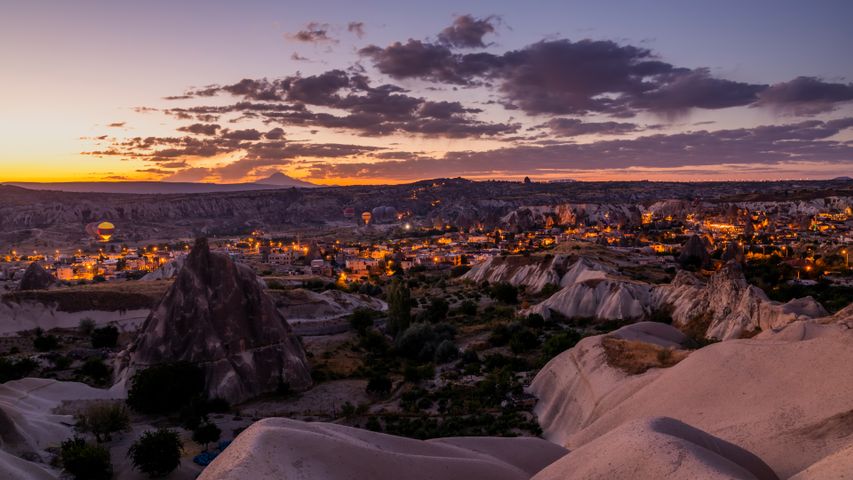Colossal limestone statues on Mount Nemrut, Adiyaman, Turkey
© Peerakit JIrachetthakun/Getty Image
The mountaintop of toppled gods
The ruins on Mount Nemrut depict a gaggle of gods from both Greek and Persian traditions, plus a few deities King Antiochus I made up himself. The range of faiths represented in the statues found near the 7,000ft (2,134m) summit reflects Turkey's long history as a crossroads of cultures. Today, the derelict statues are protected as a Unesco World Heritage Site.
In 70 BCE, Antiochus took power in Commagene, one of several small states formed from the shambles of the Seleucid Empire, in today's Adiyaman Province. Looking to unify his people, he created a mythology that hailed Greek and Persian figures, from Ares to Zarathustra - plus himself and his family. Antiochus' claim to godhood wasn't eternal, as he was deposed in 31 BCE, but before that he cemented his customised state religion into history by having it carved into stone statues on the mountain peak overlooking his kingdom.
Related Images
Bing Today Images





 Seceda, a peak in theDolomites, South Tyrol, Italy
Seceda, a peak in theDolomites, South Tyrol, Italy
 Delicate Arch, Arches National Park, Utah
Delicate Arch, Arches National Park, Utah
 Cinque Torri, Dolomites, Italy
Cinque Torri, Dolomites, Italy
 Chisos Mountains, Big Bend National Park, Texas, United States
Chisos Mountains, Big Bend National Park, Texas, United States
 Yoho National Park, British Columbia, Canada
Yoho National Park, British Columbia, Canada
 Zion National Park, Utah, United States
Zion National Park, Utah, United States
 Hot air balloons over Göreme Historical National Park in Cappadocia, Türkiye
Hot air balloons over Göreme Historical National Park in Cappadocia, Türkiye
 Kachina Bridge, Natural Bridges National Monument, Utah, United States
Kachina Bridge, Natural Bridges National Monument, Utah, United States

